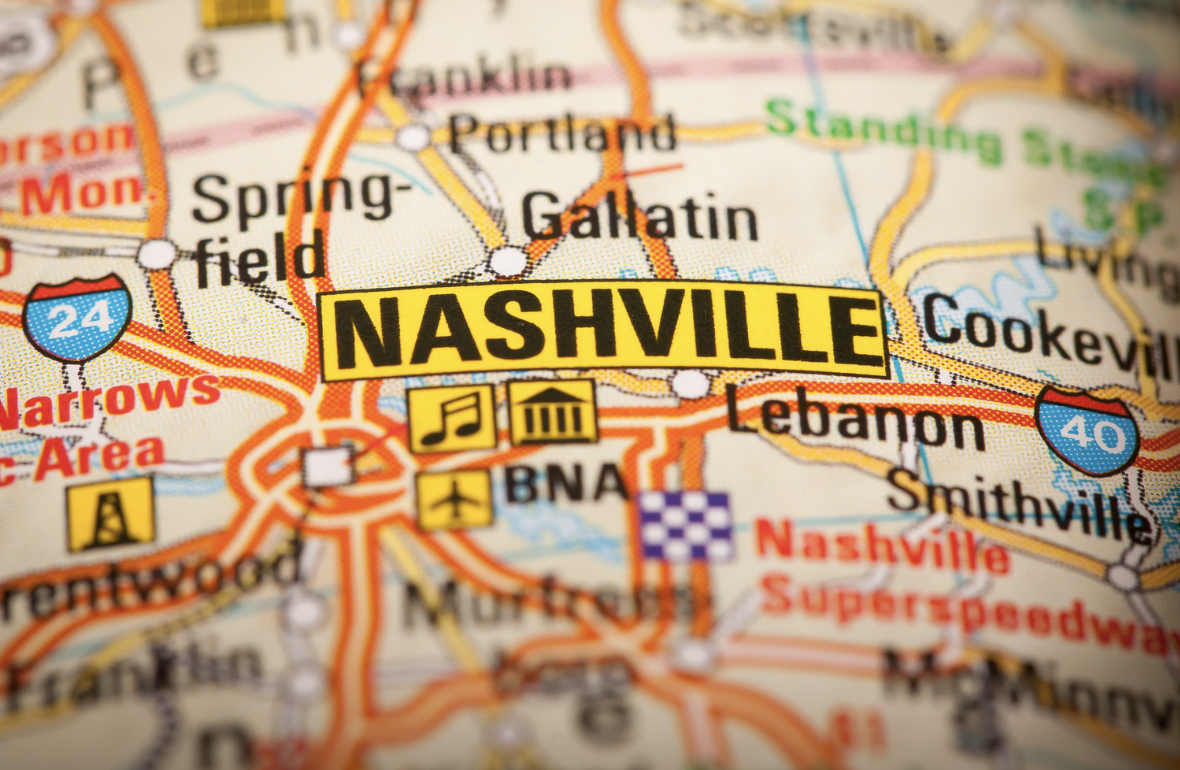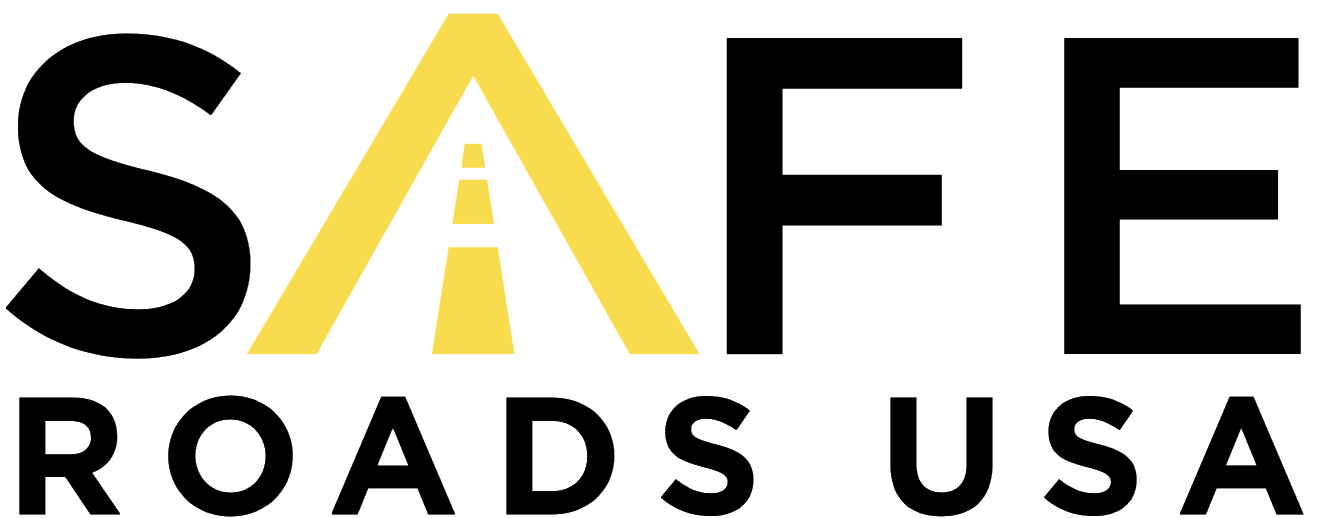Most Dangerous Roads in Nashville, TN

In 2024, the Metropolitan Nashville Police Department recorded 26,138 vehicle crashes. Of these accidents, 104 were fatal, 8,134 involved injuries, and 17,900 resulted in property damage. These numbers equate to about 72 crashes per day in Nashville, placing the city 24th in the U.S. for traffic fatalities per 100,000 residents.
Below is a closer look at why Nashville reports such a high incidence rate and which of its roads are the most risky for drivers.
What Are the Most Dangerous Roads in Nashville?
Car accidents in Nashville happen all across, but just 6% of the city’s streets account for nearly 60% of all of its fatal and serious injury-causing crashes. These routes form what traffic planners call the High Injury Network corridors:
Gallatin Pike
Gallatin Pike, running between Old Hickory Boulevard and DuPont Avenue in Madison, is one of the deadliest stretches of road in the state of Tennessee.
Between 2014 and 2021, this single route alone saw 160 motorist collisions, including 149 minor injuries, nine serious injuries, and two fatalities. Add to that six pedestrian accidents, with one serious injury, and you start to see why this particular corridor demands quite a bit of attention.
Nolensville Pike
Nolensville Pike, which runs from Elysian Fields to Providence Heights, is equally concerning. The combination of speeds exceeding 40MPH and heavy pedestrian traffic creates a particularly lethal mix, and it has claimed nine lives since 2014 (two drivers and seven pedestrians).
Murfreesboro Pike
Murfreesboro Pike near Hamilton Church Road is yet another deadly zone. It has claimed three lives since 2014: one driver, one pedestrian, and one bicyclist. What’s peculiar, though, is that these fatalities occurred despite Murfreesboro Pike being a relatively straight, well-maintained road.
Main Street
Main Street, particularly between Spring and South 7th Street, shows how the mix of transit users, pedestrians, and through traffic creates multiple conflict points and increases danger. With high-frequency bus stops on both sides, the area saw 44 serious crashes between 2014 and 2021: Eight involving pedestrians, one involving a cyclist, and 35 involving motorists.
The Most Dangerous Intersections in Nashville
Several intersections accompany the list of Nashville’s most dangerous roads. These aren’t necessarily the city’s busiest intersections but are instead the places where multiple risk factors converge.
These intersections include:
- Harding Place and Sidco Drive
- West Trinity Lane and Brick Church Pike
- Nolensville Pike and Harding Place
- Old Hickory Boulevard and Lebanon Pike
- Charlotte Pike and Old Charlotte Pike
Awareness of these intersections is important for both drivers and pedestrians to enhance safety on Nashville’s roads.
The Most Dangerous Roads For Cyclists in Nashville
Just a small number of Nashville’s streets pose a major risk to people on bikes. Nevertheless, these are the most dangerous:
- Church Street
- Charlotte Ave
- Gallatin Pike
- Lafayette Street
- 8th Ave South
- Trinity Lane (both East and West)
- Murfreesboro Pike
While these streets stand out as risky for cyclists, the city notes that it’s hard to get a complete picture of bicycle safety since there are fewer reported bike crashes than car crashes.
Risk Factors For Nashville’s Road Accidents
The city has identified several factors that contribute to higher accident rates on these roads and at these intersections, including:
Speed
Driving at high speeds reduces the impact of emergency maneuvers in the event of potential crashes. At speeds above 35 mph, the likelihood of fatalities and serious injury is higher than that of drivers cruising at reasonably lower speeds.
Pedestrian Movement
While only 3% of Nashville residents choose to walk as their primary means of transportation, pedestrians account for 17% of all traffic deaths and serious injuries in the city, with a one-in-four chance of severe injury or death when accidents occur.
The primary factors contributing to these incidents include the following:
- High vehicle speeds
- Inadequate street lighting
- Missing sidewalks
- Poorly protected transit stops
Note that these accidents disproportionately occur in the city’s most vulnerable neighborhoods, with 75 pedestrians facing severe injury or death each year.
Nighttime Accidents
Nashville averages 84 pedestrian hit-and-run incidents annually, with a significant portion of them occurring after dark. It’s a factor that points to problems with street lighting and visibility in high-risk areas.
Inadequate Infrastructure
Poor or inadequate infrastructure can contribute to higher accident rates. In Nashville, these flaws include:
- Missing sidewalks in high-pedestrian areas
- Inadequate lighting at crossings
- Insufficient protection for bicycle lanes
- Poor access to transit stops
The city’s Vision Zero plan hopes to address these specific challenges.
Driver Behavior
Human behavior often plays a role in road safety. For instance, Gallatin Pike actually sees more accidents during quiet periods than rush hour, primarily because emptier roads encourage speeding and less careful driving.
The same thinking explains why wider roads don’t always equate to safer roads. When Nashville widened certain streets, accident rates went up because the wider lanes made drivers feel more confident and drive faster, leading to more serious crashes.
The Equity Problem
Vision Zero data shows that highly vulnerable areas experience a disproportionate share of serious accidents. These areas often lack basic safety infrastructure and have higher concentrations of pedestrians and transit users.
Making Nashville’s Roads Safer
Nashville’s Vision Zero Action Plan identifies several strategies for improving road safety, such as:
- Prioritizing improvements along the corridors of the High Injury Network
- Implementing quick-build safety projects
- Focusing on vulnerable areas first
- Improving data collection and analysis
- Reducing speeds through design changes
The most effective improvements often come from understanding how different factors interact and recognizing that they need to be addressed as a system.
The Verdict on Nashville’s Most Dangerous Roads
Nashville’s most dangerous roads combine design flaws and other road safety issues to create accident hot spots. It’s not always the winding road that sees the most number of incidents, nor is it the road with a high speed limit; sometimes, it’s the driver who feels safe driving on a wide road during rush hour or one who feels confident enough to ignore other safety protocols.
With that in mind, understanding Nashville’s road safety situation requires a full grasp of why these roads experience an unusually high number of incidents and adjusting your driving behavior accordingly. Thankfully, the city itself also shows a high intent to rectify the infrastructural shortcomings, which would alleviate some of the largest risks.
